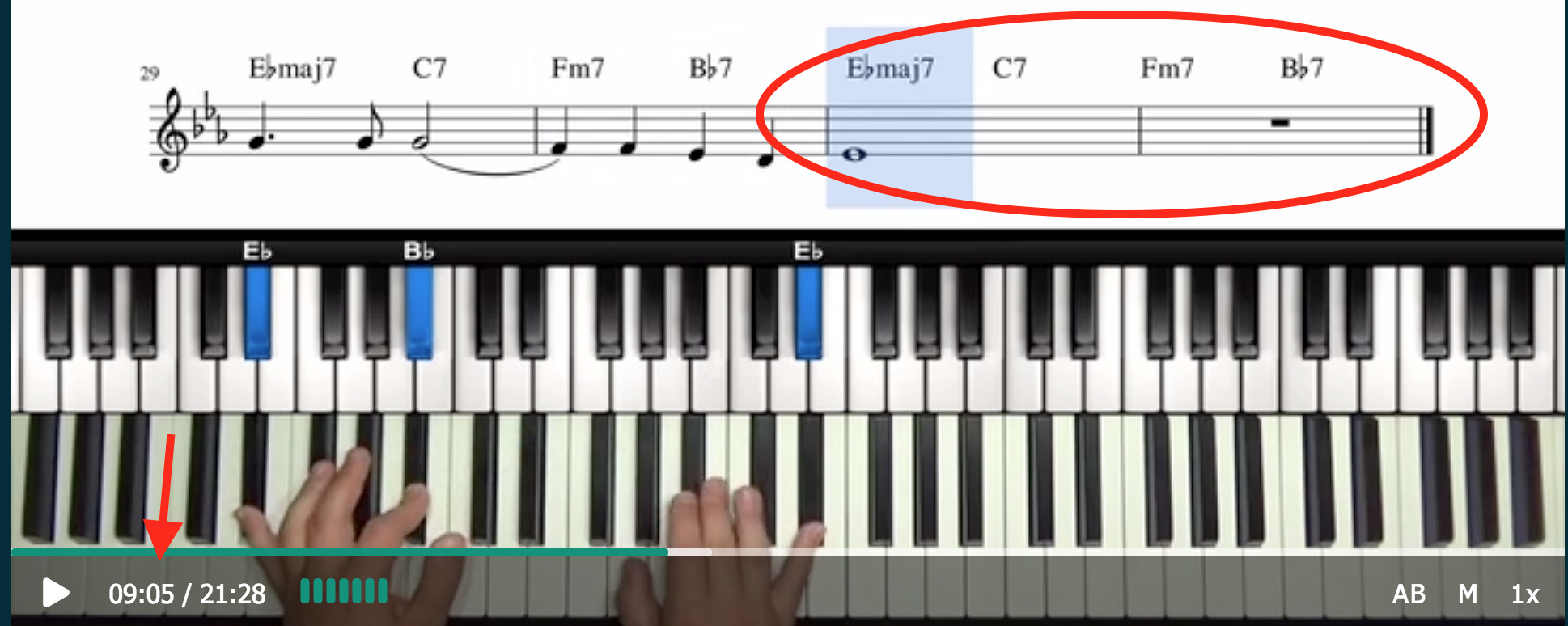Hey Pierre… great question!
Some voicings are harder to play in certain keys.
The Herbie Hancock Voicing is difficult (and even uncomfortable!) to play in C and G.
A simple recommendation would be to modify the voicing slightly…
For C-11 Herbie Hancock Voicing, in your right hand swap the F(11) with G(5). Basically, move your right-hand index finger up a whole step.
This will give you a C-9 chord, which doesn’t have the same richness of the 11th, but it still sounds great.
Another more interesting option… invert the chord…
try this voicing:
Left Hand: G - C - Eb
Right Hand: F - Bb - D
Here we are playing the exact same notes, but now we have the G in the bass, which gives the chord a very interesting sound. It’s still C-11, but with G in the bass.
This gives you a lovely ‘bi-tonal’ sound … the left hand is playing a 2nd inversion C- Triad, and the right hand is playing a 2nd inversion Bbmaj Triad.
Your ears should hear both of the triads separately, which creates the ‘bi-tonal’ effect.
You can also do this in every key… a wonderful sound to experiment with.
An example of this voicing in a jazz standard lesson:
Check out the lesson on “Autumn in New York” where we play that exact voicing in the 4th bar for A-11 : https://www.pianogroove.com/jazz-piano-lessons/autumn-in-new-york-tutorial/
You will see that it voice leads very nicely to the D7. Again you can do this in all 12 keys.
I’d recommend that you take that progression around all 12!
A final note…
You will always find that chords, progressions, scales, licks, lines, etc… are harder to play in some keys than others.
This is also different for everyone because we all have different size and shapes of hands.
Always experiment with the inversions and you can discover some really cool sounds 
Hope this helps and if I can be of further assistance just let me know.




